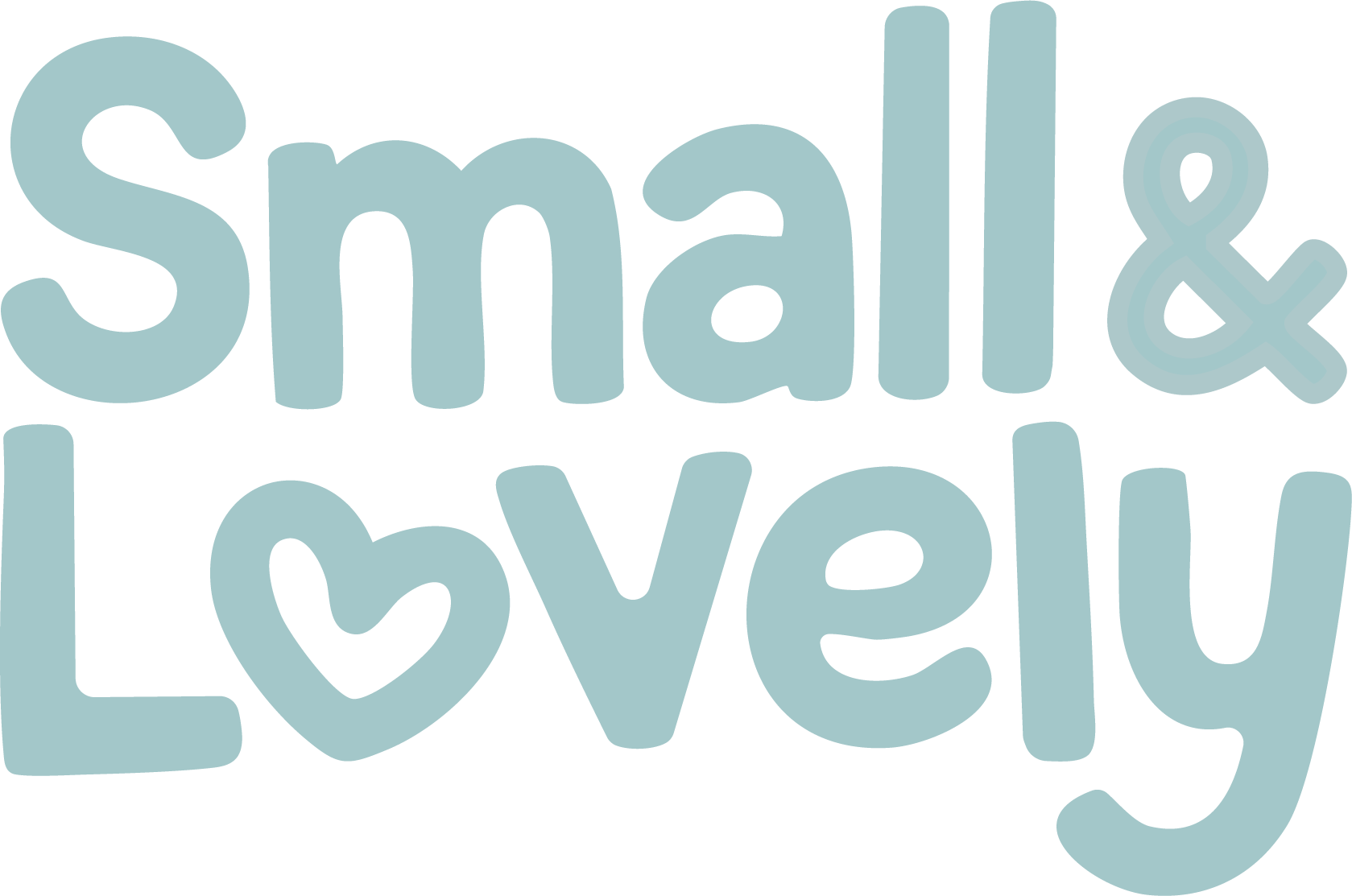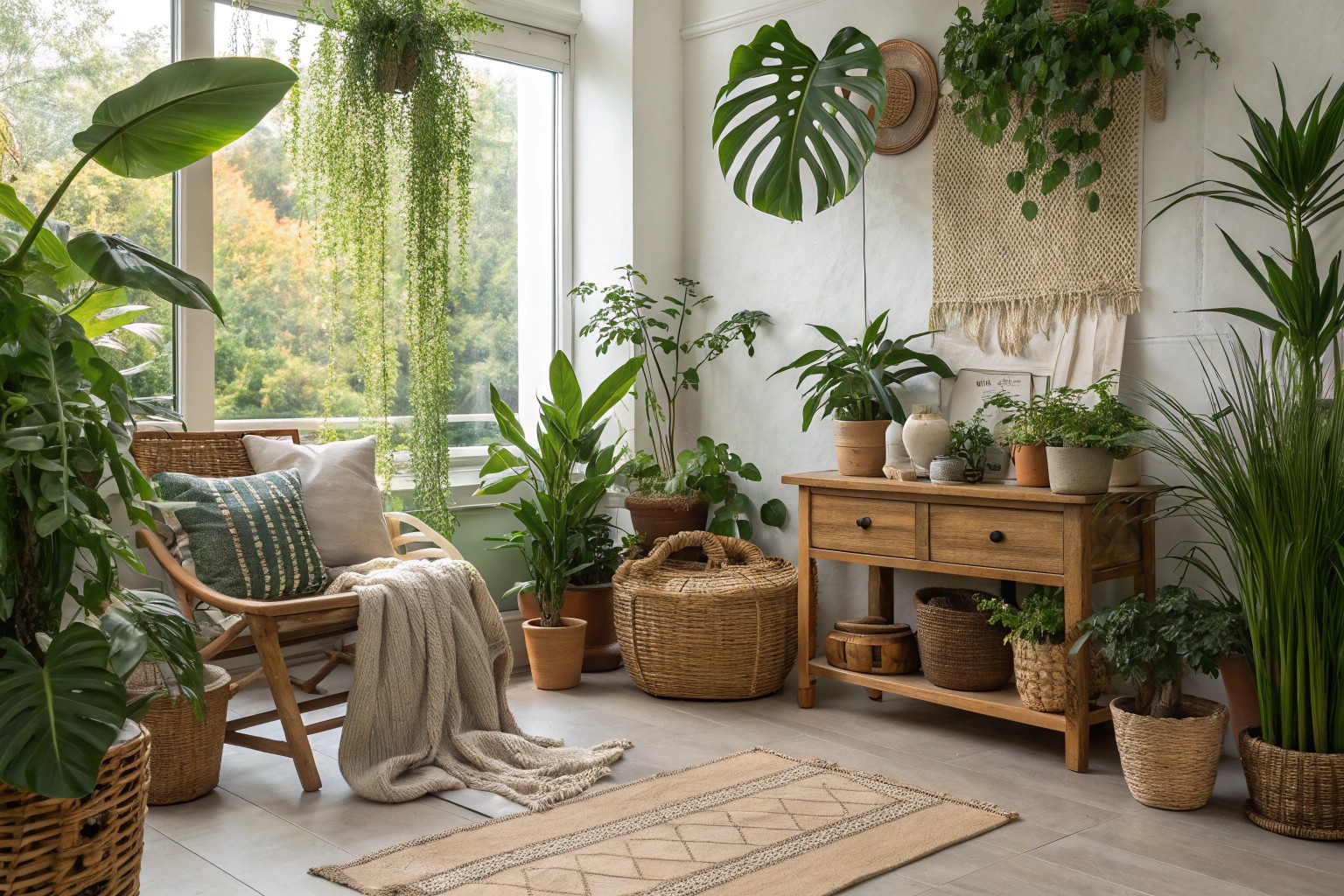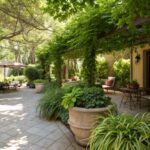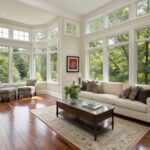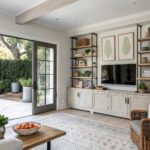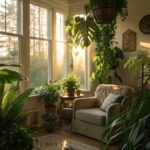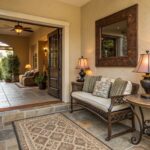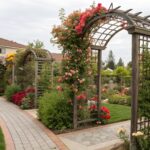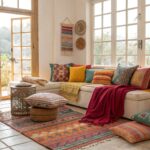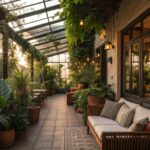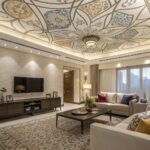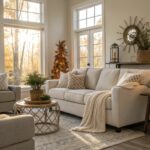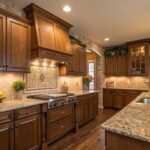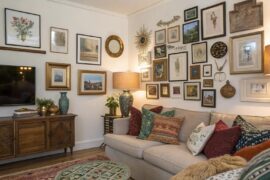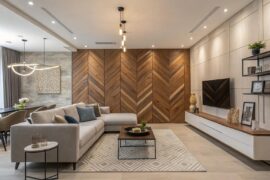Organic modern design creates spaces that feel both sophisticated and deeply connected to nature. By blending natural materials with clean, contemporary lines, this style offers perfect harmony between warmth and simplicity. As you explore these techniques, you’ll discover how thoughtfully selected elements can transform any space into a serene yet stylish sanctuary that feels both timeless and current.
Understanding Organic Modern Design Principles
Blending Nature with Contemporary Aesthetics
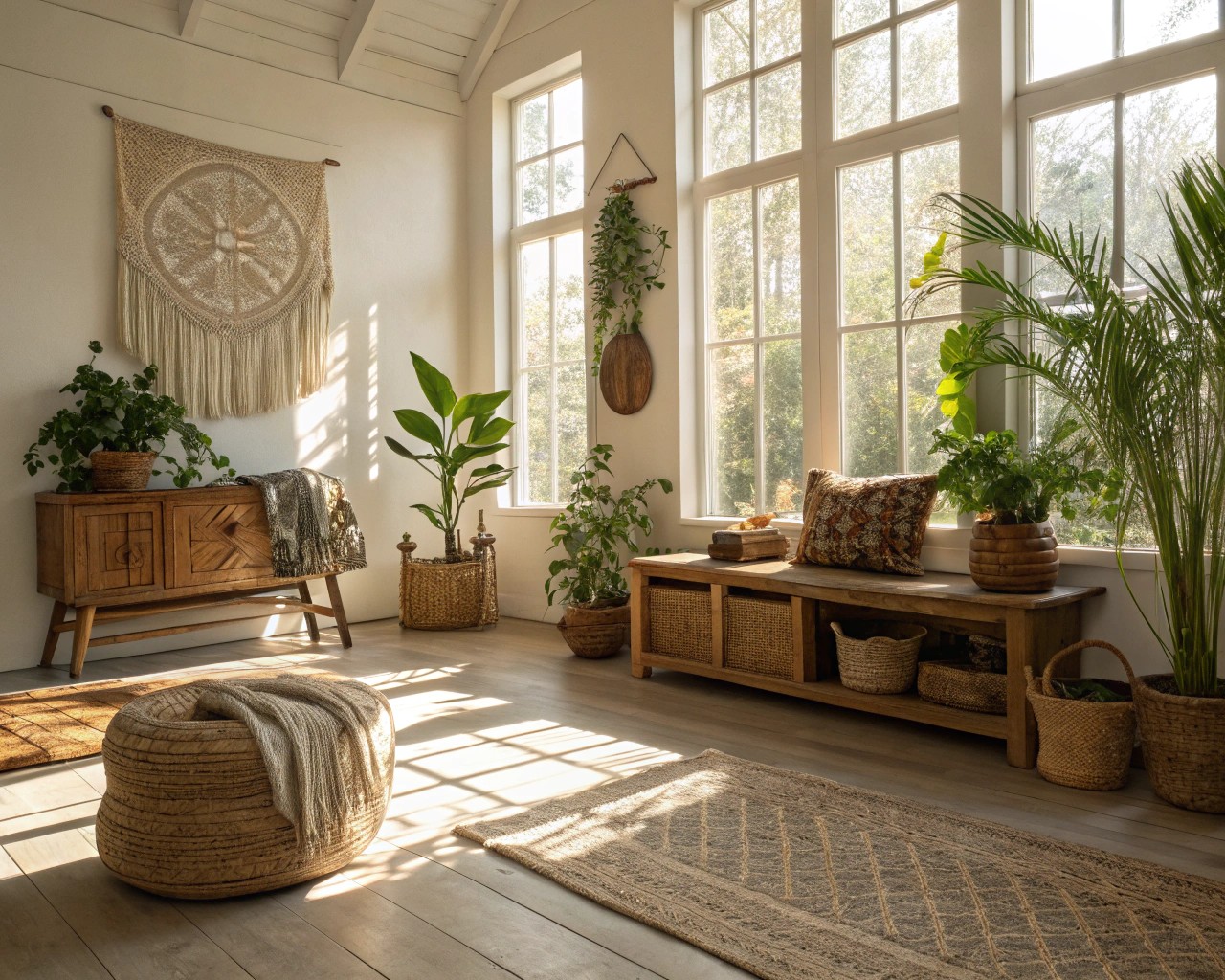
Organic modern style marries natural elements with sleek design principles. It creates spaces that feel fresh yet timeless through several key characteristics:
- Emphasis on natural light and open spaces: Large windows are common, allowing sunlight to flood rooms and create airy, spacious environments
- Sustainable, organic materials: Elements like bamboo floors and wool rugs that connect interiors to the natural world
- Minimalist yet functional approach: Every piece serves a purpose while avoiding visual clutter
- Clean lines paired with organic forms: Modern structures softened by natural elements and gentle curves
I’ve found that clients are increasingly drawn to this balance. When done correctly, organic modern spaces evoke a sense of calm that’s difficult to achieve with purely contemporary design. The natural elements provide warmth and character, while the modern framework keeps things from feeling rustic or outdated.
The Biophilic Connection
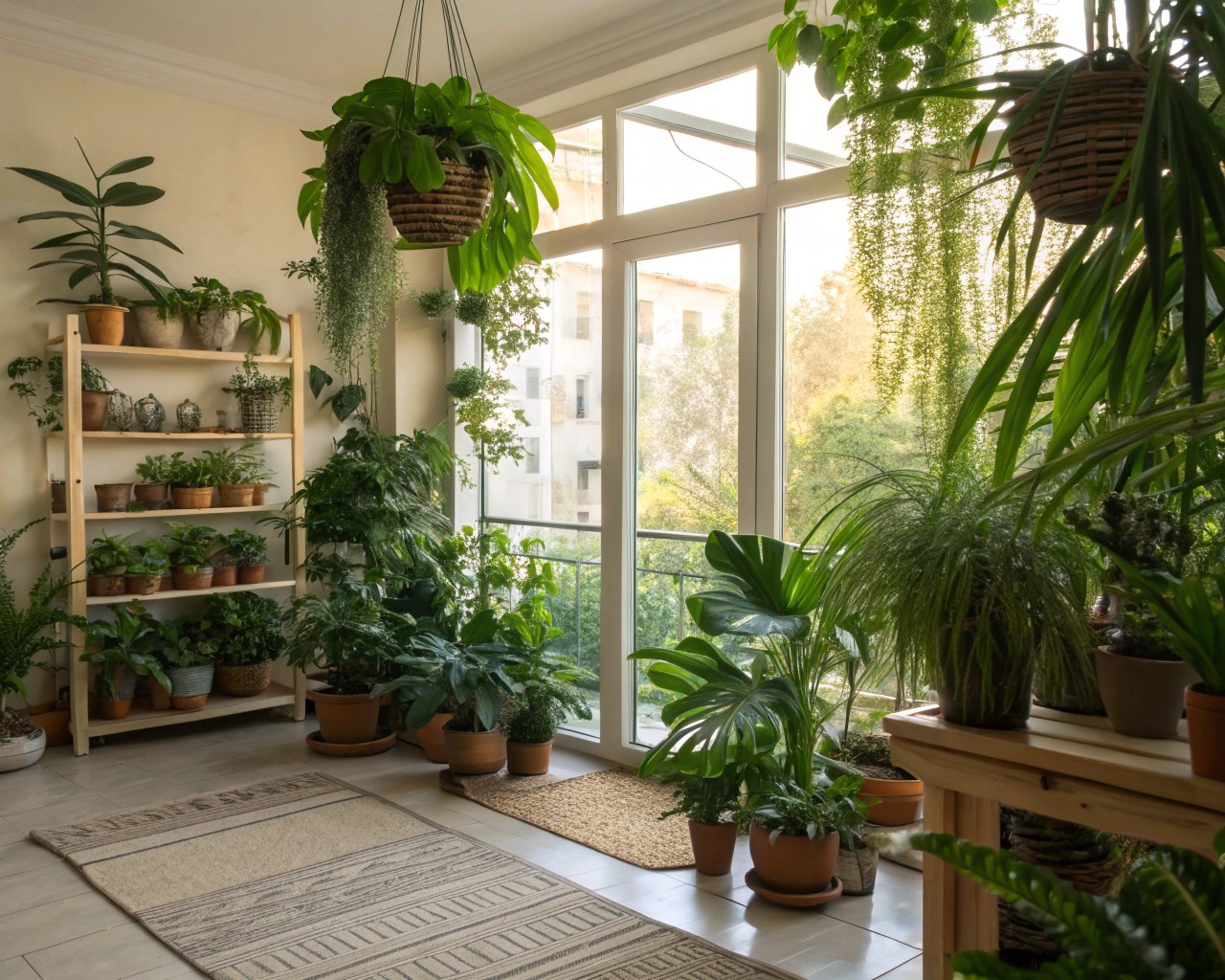
Organic modern design draws heavily from biophilic design principles – our innate desire to connect with nature. Research shows spaces incorporating natural elements improve wellbeing, reduce stress, and enhance creativity.
The positive impact is tangible; one client, after an office transformation focused on natural elements, noted measurably improved employee satisfaction. Their experience highlights that incorporating natural materials thoughtfully goes beyond mere decoration—it addresses fundamental human needs by creating more responsive and supportive environments.
Essential Natural Materials for Organic Modern Design
Wood: The Foundation of Warmth

Wood serves as perhaps the most versatile and essential material in organic modern design, bringing life and warmth to minimal spaces.
Common and Rare Wood Types:
| Wood Type | Characteristics | Best Applications | Sustainability Rating |
|---|---|---|---|
| Oak | Durable, pronounced grain | Flooring, furniture, beams | High (when responsibly sourced) |
| Walnut | Rich, dark tones, smooth finish | Statement furniture, accent walls | Medium |
| Maple | Light color, subtle grain | Cabinetry, flooring | High |
| Bamboo | Fast-growing, versatile | Flooring, decorative elements | Very High |
| Teak | Weather-resistant, golden tones | Indoor-outdoor furniture | Medium (seek certified sources) |
| Reclaimed Woods | Unique character, history | Feature walls, statement pieces | Very High |
We’ve found that combining different wood types within a space creates visual interest while maintaining cohesion. In a recent Manhattan apartment renovation, we paired light maple flooring with walnut furniture pieces, creating depth without overwhelming the space.
Stone and Mineral Elements
Stone brings permanence and natural patterning to organic modern spaces, offering both visual and tactile interest.
Popular Stone Applications:
- Countertops (marble, granite, soapstone)
- Flooring (limestone, slate, travertine)
- Accent walls and fireplace surrounds
- Decorative elements and accessories
- Bathroom surfaces (shower walls, vanities)
In one mountain home renovation, I selected honed limestone for the kitchen counters rather than polished marble, providing a more organic, lived-in feel that complemented the surrounding landscape. The slight texture caught the light beautifully while remaining practical for daily use.
Natural Fibers and Textiles
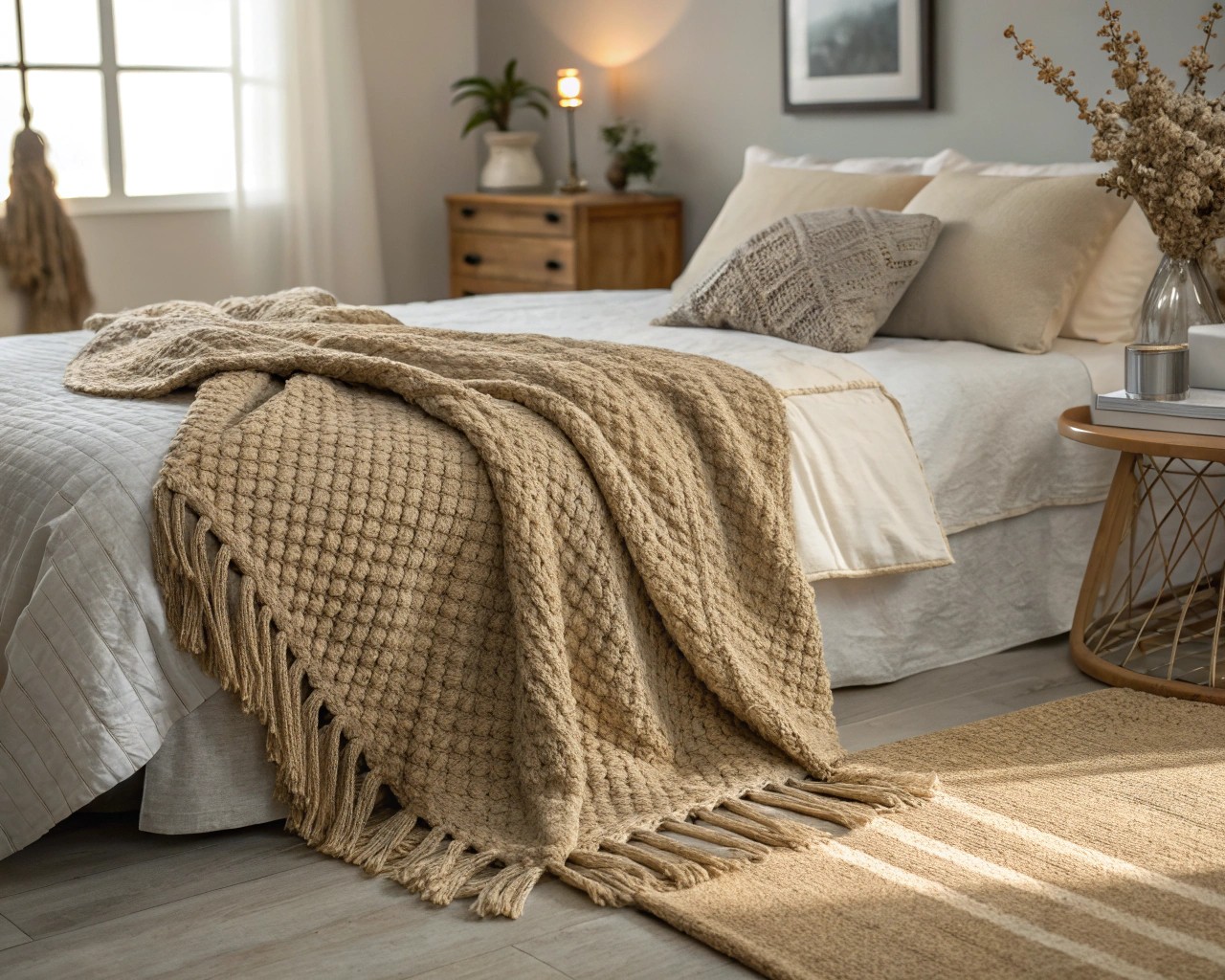
Textiles add crucial warmth and texture to organic modern spaces, softening what might otherwise feel too austere.
Common Natural Fabrics:
- Linen: Lightweight with casual elegance
- Cotton: Versatile and comfortable
- Wool: Rich texture with natural insulation
- Hemp: Durable and highly sustainable
- Jute/Sisal: Rough texture perfect for rugs
More Unique Options:
- Bouclé: Textured, looped yarn creating visual interest
- Organic silk: Providing luxurious sheen for special elements
- Recycled fabrics: Environmentally conscious alternatives
- Cork fabric: Offering unique texture and sustainability
Plant Elements and Living Materials

Plants are essential in organic modern design, bringing literal life into spaces and completing the biophilic connection.
As noted by experts in biophilic commercial spaces, a space often feels incomplete without living elements. Plants serve multiple functions: enhancing aesthetics, improving air quality, and strengthening our connection to the natural world, making them indispensable in organic modern design.
Crafting with Natural Materials: Techniques and Applications
Working with Wood in Organic Modern Spaces
Wood can be incorporated through various architectural elements and furnishings:
Architectural Elements:
- Exposed ceiling beams
- Plank feature walls
- Custom built-ins
- Sliding doors
- Ceiling treatments
Furniture and Accents:
- Tables with live edges
- Sculptural wooden chairs
- Minimal shelving systems
- Turned wooden vessels
- Carved decorative objects
We recently renovated a former industrial space where we preserved the concrete floors but added warmth through white oak wall paneling with a natural finish. The contrast between industrial and natural elements created precisely the organic modern feel our client desired.
Incorporating Stone Elements Effectively
Stone works best when:
- Used as a focal point (e.g., fireplace surround)
- Balanced with softer elements
- Allowed to showcase natural patterns
- Applied in thoughtful, intentional ways
You should approach stone as you would a piece of art – let it command attention rather than competing with too many other strong elements in the space.
Textile Selection and Application
To layer textiles effectively:
1. Start with larger pieces (rugs, curtains) in neutral tones
2. Add medium elements (upholstery) with subtle texture
3. Finish with smaller accents (pillows, throws) that can be changed seasonally
4. Limit bold patterns to create calm, unless using natural motifs
Plant Integration Strategies
Successful plant integration requires:
- Considering light conditions for each space
- Selecting appropriate species for the environment
- Creating planting plans that include variety in height and texture
- Incorporating adequate maintenance plans
- Using sculptural planters that complement the design
Case Studies and Client Stories
The Riverside Renovation
A family of four approached me to transform their traditional riverside home into an organic modern retreat. The key challenge was respecting the natural setting while updating the dated interior.
Approach:
- Replaced small windows with floor-to-ceiling glass to capture river views
- Incorporated reclaimed oak from a local barn for feature walls
- Used locally-sourced stone for the fireplace surround
- Selected a neutral palette inspired by the surrounding landscape
- Added custom built-ins to reduce visual clutter
“The transformation was beyond what we imagined,” the client shared. “It feels like the river and woods are now part of our home, yet everything feels current and clean.”
The Urban Loft Evolution
Converting a former industrial loft in Chicago presented unique challenges in bringing natural elements into an inherently urban space.
Solutions:
- Installed planked white oak ceiling to draw the eye up
- Created a living wall as the dining area backdrop
- Used natural fiber textiles to soften concrete and metal elements
- Incorporated a water feature to add movement and sound
- Selected furniture with organic shapes in natural materials
The result was a space that felt simultaneously urban and connected to nature – proof that organic modern design works even in the most metropolitan settings.
The Commercial Transformation: HasleTre Office Building
One particularly inspiring commercial project is the HasleTre office building, designed by Oslotre. This 3000m² structure is primarily constructed from high-density wood rather than steel and concrete, resulting in 60% lower carbon emissions than conventional buildings of similar size.
What makes this project remarkable is how the sustainable foundation creates a captivating interior with exposed wooden walls and floorboards that require minimal embellishment. The space instantly evokes functionality and a profound connection to nature, making the building itself a storyteller.
In the interior design process, furniture selection played a pivotal role in embodying sustainable principles. Through thoughtful reuse and recycling efforts, 60% of the furniture used was not new – combining reclaimed items from the client’s old office with carefully sourced secondhand pieces.
Sustainable Sourcing and Environmental Considerations
Ethical Material Sourcing
When sourcing natural materials, we always consider:
- Forest Stewardship Council (FSC) certification for wood products
- Reclaimed or salvaged options before new materials
- Local sourcing to reduce transportation impact
- Ethical labor practices throughout the supply chain
- Complete lifecycle assessment
I’ve built relationships with several suppliers who specialize in sustainable materials. One particularly valuable connection is a local sawmill that processes trees removed for development rather than sending them to landfill. These relationships allow me to tell clients exactly where their materials originated.
Eco-Friendly Alternatives
Sometimes traditional natural materials aren’t the most sustainable choice. Consider these alternatives:
- Bamboo instead of hardwoods (grows much faster)
- Cork as an alternative surface material
- Mycelium (mushroom-based) materials for decorative elements
- Recycled glass instead of new stone for certain applications
- Plant-based fabrics like nettle, hemp, or organic cotton
Long-term Sustainability Benefits
Investing in quality natural materials provides:
- Greater longevity, reducing replacement needs
- Improved indoor air quality through fewer synthetic compounds
- Energy efficiency through natural insulation properties
- Potential for repair rather than replacement
- Timeless appeal that transcends trends
One client initially hesitated at the cost of solid wood cabinetry over manufactured alternatives. Ten years later, they reported that while friends had already replaced lower-quality kitchens, theirs had developed a beautiful patina and still functioned perfectly.
Balancing Natural Elements with Modern Design
Creating Harmony Between Organic and Contemporary
The key to successful organic modern design lies in balance:
Modern Elements:
- Clean lines and minimal detailing
- Functional focus and uncluttered spaces
- Strategic use of metal and glass
- Architectural lighting
- Technological integration
Organic Elements:
- Natural materials with visible texture
- Curved forms and irregular edges
- Earthy palette with subtle variations
- Living components (plants and natural elements)
- Handcrafted details
We recently designed a kitchen where sleek, handleless cabinetry in a matte finish was balanced with an oversized island featuring a live-edge wood slab. The tension between the geometrically perfect cabinets and the irregular natural edge created exactly the harmonious contrast that defines organic modern design.
Avoiding Common Pitfalls
Watch for these common mistakes:
- Overdoing rustic elements (creating a cabin feel rather than organic modern)
- Using too many competing natural materials without hierarchy
- Selecting synthetic “natural-look” materials rather than authentic ones
- Forcing natural elements into overly sterile modern spaces
- Neglecting durability in favor of aesthetics
Finding the Right Proportions
A good rule of thumb is the 70/30 distribution: about 70% of visible surfaces should be relatively simple and clean, with 30% showcasing more expressive natural elements. This prevents overwhelming the space while still providing sufficient natural character.
Practical Applications Room by Room
Kitchen Considerations
Natural Material Opportunities:
- Wood cabinetry or accent fronts
- Stone countertops with unique patterning
- Textured backsplashes (handmade tile, stone)
- Woven pendant lighting for warmth
- Herb gardens for function and beauty
In one recent kitchen redesign, I created a statement by using figured maple for island cabinetry while keeping perimeter cabinets simple. This focal point anchored the space while maintaining the clean lines essential to organic modern design.
Living Space Recommendations
Key Elements:
- Statement wood coffee or console table
- Natural fiber rug (wool, jute, or sisal)
- Textured organic accessories
- Plant groupings at varying heights
- Balanced lighting (both architectural and decorative)
Living spaces benefit from “transitional moments” – areas where organic and modern elements directly interact. For example, placing a highly textural ceramic vessel on a minimal steel shelf creates visual interest through contrast.
Bedroom Sanctuaries
Bedrooms particularly benefit from organic modern approaches, as natural materials promote rest and relaxation.
Considerations:
- Natural fiber bedding (linen, cotton, wool)
- Wood headboard or bed frame
- Minimal window treatments in natural materials
- Reduced synthetic elements
- Careful plant selection for sleep-promoting varieties
Bathroom Retreats
Bathrooms present unique challenges for natural materials due to moisture concerns, but thoughtful applications create spa-like experiences:
Possibilities:
- Stone or porcelain with stone-like appearance
- Teak or cedar shower details
- Natural ventilation when possible
- Plant varieties that thrive in humidity
- Natural light supplemented with warm artificial lighting
One of my favorite bathroom transformations involved replacing a standard shower enclosure with a walk-in shower featuring a preserved moss wall protected by a skylight. The client reports it’s like “showering in a rainforest” – the ultimate biophilic experience.
Outdoor Connections
Organic modern design excels at blurring indoor/outdoor boundaries:
Strategies:
- Continuous flooring materials from inside to out
- Large glass doors or window walls
- Outdoor rooms with the same attention to detail as indoor spaces
- Container gardens that complement interior plant selections
- Natural shade solutions (pergolas, plantings)
